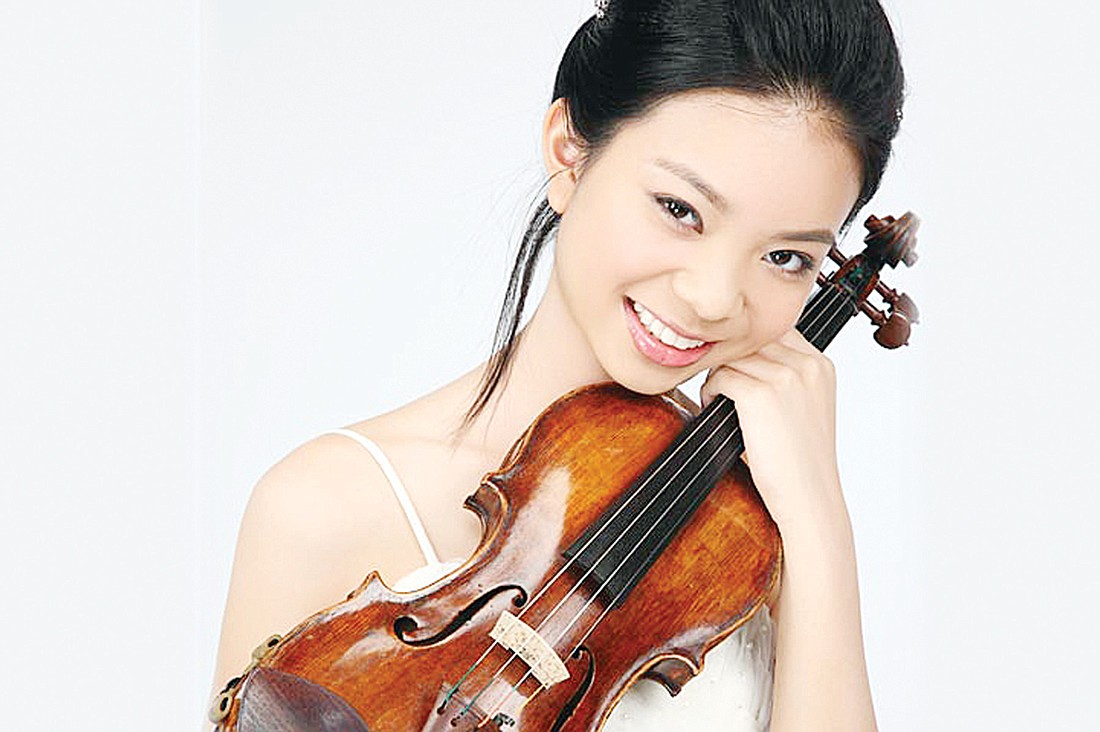- April 24, 2024
-
-
Loading

Loading

What makes a career — I mean a major career — in music? We’ve all heard performers who seem to have less talent than others but, somehow, have made it into the stratospheric realm of superstardom. So, what makes their careers more soaring than others?
We heard a teenage violinist named Sirena Huang the other day in a “soiree” recital with pianist Lee Dougherty Ross for the Artist Series Concerts of Sarasota. The performance, held in the home of John Fischer (executive director of the ASCS) and Jim Weisenborne, had the perfect setting: warmth and charm, in a generous, rectangular music room equipped with two massive pipe organs and a Steinway grand. It was not as big as a concert hall but certainly right for chamber music of this type.
Huang also had warmth and charm. This petite slip-of-a-girl is personable, well-spoken, bright and the essence of contained exuberance. She attacks her gorgeous Guarneri with a power and fearlessness that brings out the best in this incredible instrument. She began her program with Giuseppe Tartini’s “Theme and Variation on a Theme by Corelli,” arranged by Fritz Kreisler. She pounced on the opening notes before the applause for her entrance had died down. From then on, the room was hers.
She plays, as the best of the violinists have always done, with her whole body, breathing with the phrases, moving with the music and, at the same time, getting out of her own way so the composer’s intention shines through.
But we can’t overlook Ross, co-founder and artistic director of the ASCS and Huang’s partner at the piano, who played with a beauty and expressiveness, not to mention technical prowess, that gave the young violinist the kind of supportive assurance necessary in a recital. Their collaboration in Kreisler’s well-known “Liebesleid” was so stylistically Viennese, I was surprised Kreisler didn’t make an appearance to applaud their lilt.
Best of all was their performance of Pablo de Sarasate’s “Zigeunerweisen,” which they bit into with an impassioned gutsiness that was perfect for this wandering gypsy-of-a-piece. I wish you could have heard how Huang handled the glissandos that so many seasoned violinists play impeccably but without the sense of style she brought to them. Hers were shimmering and shivery, sounds reminiscent of Rabin and Shaham.
There were a few moments when Huang’s enthusiasm and youth got the best of her, such as when, in the Grieg C minor sonata, some of her pizzicatos lost their focus, she rushed the third movement, and, occasionally, her pitch went sharp, especially in some of the large ascending intervals. But I’m nitpicking. This is stuff that will even out with age, experience and the ability to channel that exuberance and make her playing both exciting and flawless.
This brings us back to the question of what makes a super career. Huang is 17. She’s working with one of the finest violin teachers at Juilliard, and the school has found her worthy of using one of their best instruments for her performances. She’s smart, personable, attractive, musical, an excellent technician and passionate. One would think that if she continues along this track, she’ll become one of the great violinists of the 21st century.
Yet, so much can happen in a life, and only the future will tell what will become of this young performer. Will she become a musical household name, join a string quartet and become a chamber musician or join an orchestra where she’s assured of a regular income and a home base?
Stay tuned.